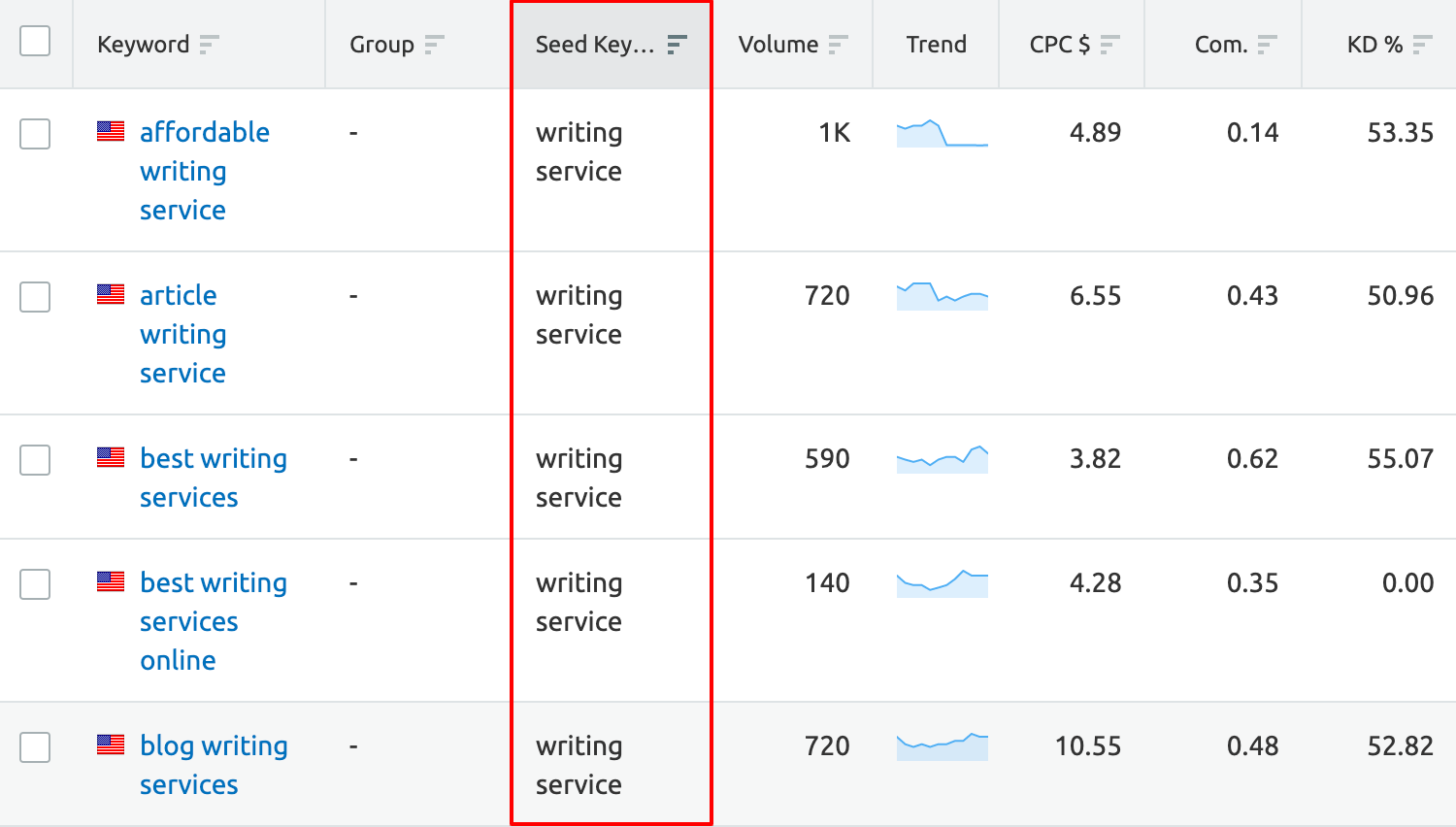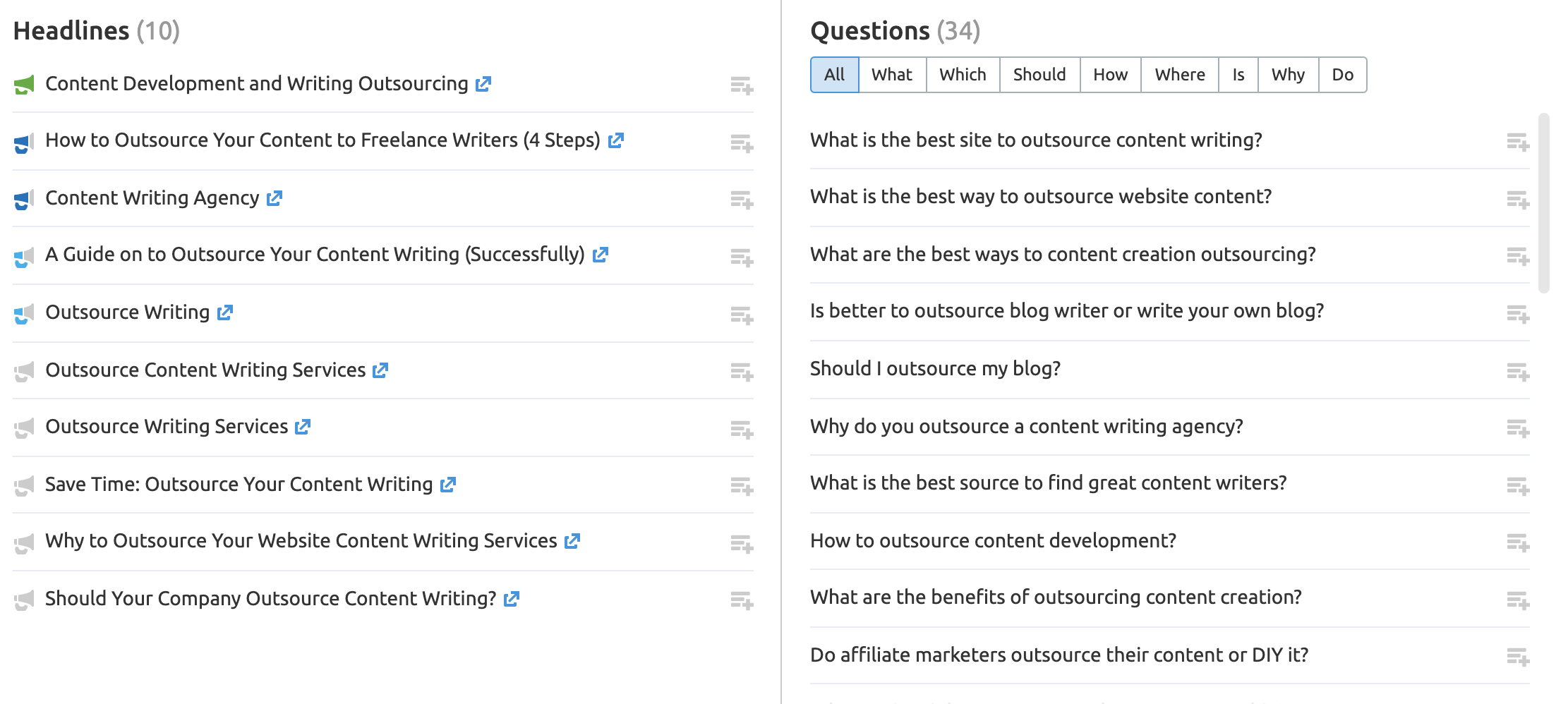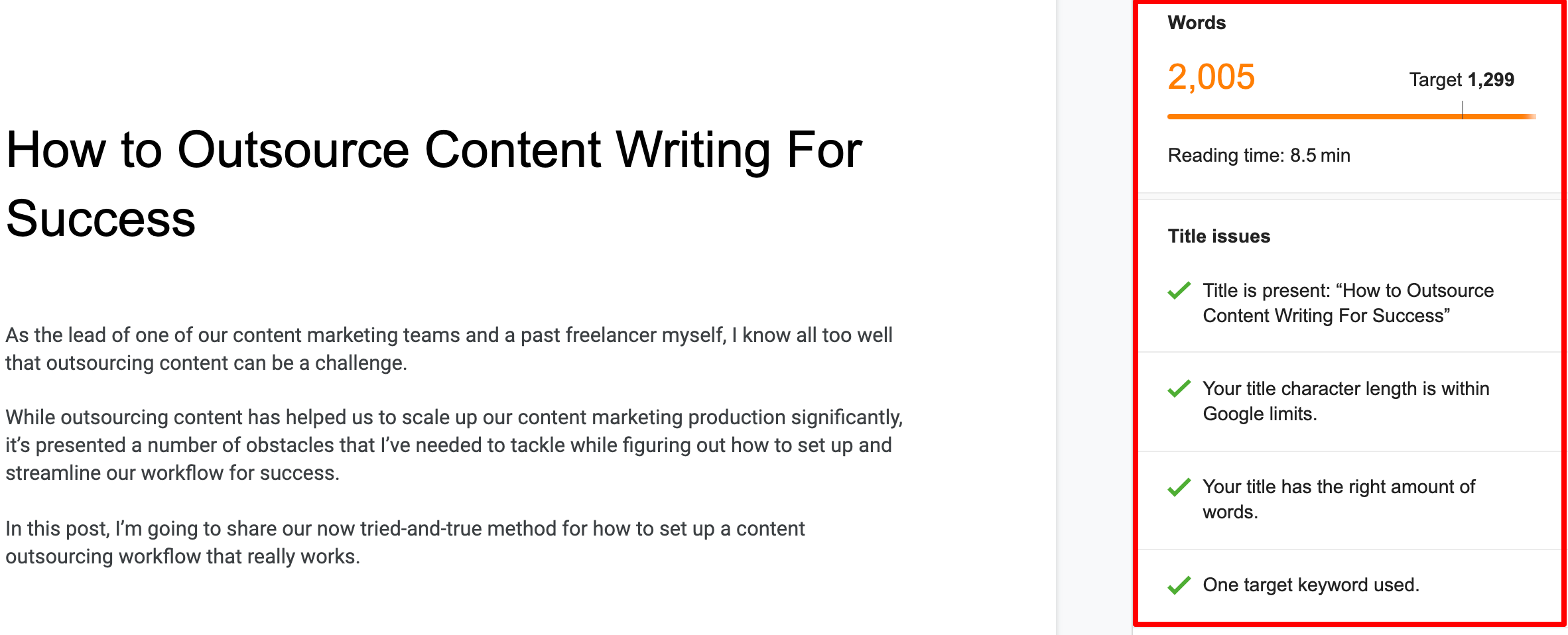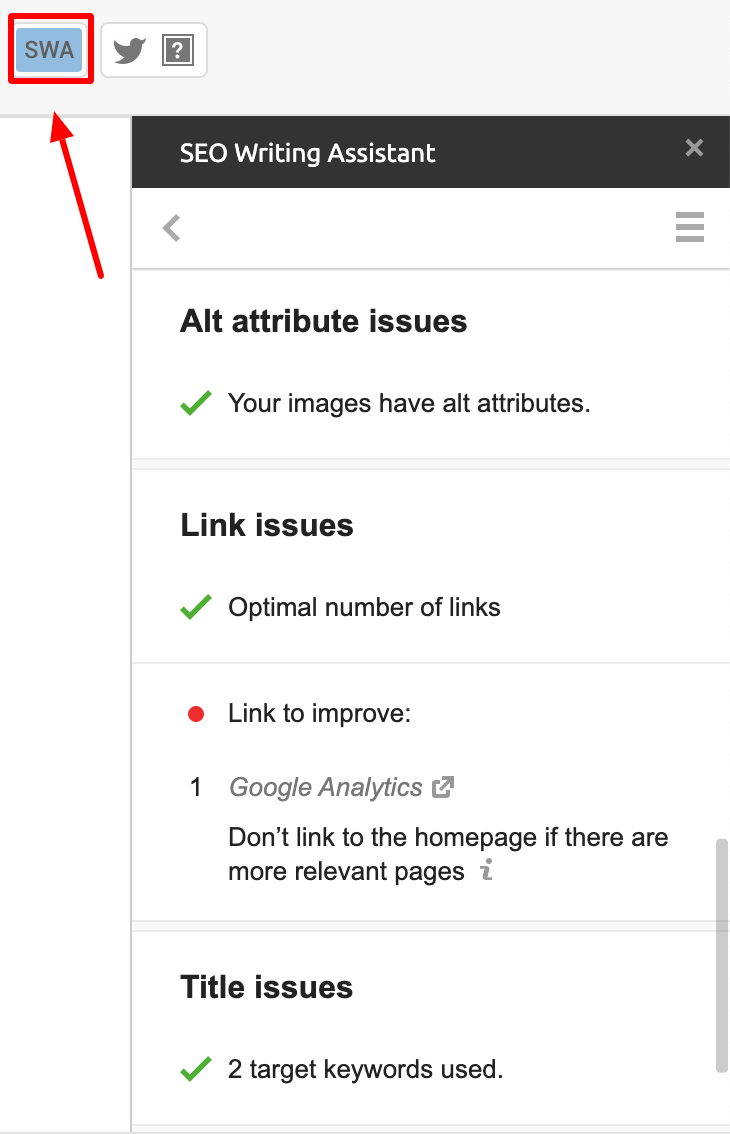As the lead of one of our content marketing teams and a past freelancer myself, I know all too well that outsourcing content writing can be a challenge.
While outsourcing content has helped us to scale up our content marketing production significantly, it’s presented a number of obstacles that I’ve needed to tackle.
In this post, I’m going to share our now tried-and-true method for how to set up a content outsourcing workflow that really works.
Laying the Groundwork for Content Outsourcing
There are several steps you should take to lay the groundwork for future outsourcing. They are essential; without them, even the most carefully designed content workflow won’t be able to keep everyone on track.
I won’t go into too much detail on each of the steps because they all deserve their own separate article, but I’ve provided some helpful links in case you want to learn more.
Step 1. Set Your Goals
Setting goals for your content marketing strategy will give you a clear focus for what you need to create moving forward.
Here are a few examples:
If you want to boost organic traffic, focus on educational articles, research papers, and press releases.
When you want to generate leads, create whitepapers, ebooks, and product-focused blog posts that feature a lead generation form.
Newsletters and landing pages with special offers can be used to drive sales.
In addition to giving you strategic focus, this can also help your writer understand how product-oriented a piece of content should be, and how to optimize a post for specific goals.
Step 2. Define Your Audience
When it comes to defining your audience, you want to understand their core demographics, but you also want to go beyond the basics:
Research and define specific niches within your general audience.
Understand their key pain points, and how your product or service can help solve those pain points.
Determine how they interact with your business and flesh all this out with buyer personas.
Use these insights to choose the right topics and keywords as well as the writing style and the in-post examples.
Step 3. Generate Topic Ideas
Start by creating your semantic core. It will help you organize your keyword/topic strategy, improving your ranking potential moving forward.
Identify 10 “seed” keywords, which are often general, high-volume keywords.
Using seed keywords, conduct keyword research to find additional relevant keywords. A list of 10 seed keywords can quickly expand into a list of over a hundred additional terms.

Organize these keywords by volume, keyword difficulty, keyword intent (to help you match the right keywords with the right posts according to funnel stage), and the pillar topic, removing any irrelevant keywords along the way.

Your semantic core will help you to choose your topics and create a content plan that will appeal to your target audience and help you reach your specific goals.
To expand your topic list, consider the following tactics:
Use sites like Quora, competitor reviews, and “most asked questions” on Google to find topics related to your seed keywords.
Ask your social media followers what they’d like to learn about, or what questions they have.
Use content ideation tools like Topic Research to generate topic ideas.

Check out what your competitors are doing and elevate it, either through keyword gap analysis or by repurposing their content and building upon it.
Ask your writers for topic suggestions if they’re experienced in content strategy.
Step 4. Create a Content Calendar
Once you’re clear about your goals, topics, content formats, respective funnel stages, and marketing channels, you can work out your content calendar. At this stage, make sure that you don’t interfere with other teams’ publishing plans (if relevant).
I recommend setting out your content plan and calendar on an Excel sheet, detailing the following for each individual item:
The goals you have for the post
Marketing channels to promote it on
The type of content it is
The topic itself
Deadlines and publication dates
Task owners or other team members involved
Step 5. Set Your Budget
Once you know how much and what type of content you want to outsource, figure out exactly how much our team has to spend each month and on each individual piece before entering negotiations with writers. The budget can influence which writer I work with, how long the pieces will be, and what’s involved in the creation process.
Setting Up Your Content Outsourcing Workflow
Above, we looked at the steps you need to take to create a stable footing when it comes to your content outsourcing moving forward.
Now it’s time to move on to the actual process of outsourcing your content with a freelance writer or third-party content agency.
Step 6. Work Out Your Deadline
Your deadlines should always be centered around your content calendar.
I usually request a draft at least one week before my desired publication date so I can carry out the quality assessment (either on my own or with my team) and request revisions if necessary.
Remember to ask the writer upfront how long they’ll need for revisions, and factor that into the draft deadline.
If you’re working with a new content writer that you’re not sure about, consider pushing the deadline up further if possible; this will give you more time as you get used to working together.
Step 7. Find the Right Writer for the Task
When choosing a writer, my strategy is to choose the right person for the specific type of content that you’re working on.
I have one writer, for example, who I outsource high-value, strategic articles to, one who writes short-form copy, and another who excels at research analysis.
This approach has the following benefits:
I don't need to search for a new writer every time I have a project.
I can choose a freelancer who specializes in that particular content format.
I always have a back-up writer if my first choice isn’t available.
If you’re looking for a new writer, ask your network for referrals, and find someone who has the experience to do the job well.
Sometimes third-party platforms like our Content Marketplace can be helpful, as we’ve already vetted the writers for you.
Step 8. Write a Strong, Detailed Brief
A strong, detailed brief will communicate what you expect, including who the audience is, what keywords you want to be targeted, and how long the piece should be.
It should include the following:
The specific goal you’re optimizing for
What stage of the funnel you’re trying to reach
The keywords that you want to target, which can be pulled from the semantic core or through new keyword research
The tone of voice you want the writer to use
Any specific links, statistics, or products you want the writer to use or mention
The competition that you don’t want the writer to link to
Examples of content that you do like
Visuals you want the writer to include
Does your content need to be approved by other team members? Make sure they see the brief before the writer ever gets to work on the piece.
In my experience, it’s also best to think ahead. If you have several pieces around a single topic that you want to outsource, plan how you’d like to interlink them and see if you can have one person write all of the pieces for you.
You can see how to format the ideal content brief here.
Step 9. Revise and Request Revisions
Run a Content Quality Check
Do a manual review to make sure that the content adheres to our branded style guide.
Use third-party tools can help you assess the SEO potential and grammar. I use SEMrush’s SEO Writing Assistant and Grammarly, for example, as add-ons in my Google Docs to run a quick check when I get the first draft.

Have an expert review the post. If your article is product or industry-specific, get the right team member to review the article.
Request Revisions
No matter how many times you’ve worked with a writer in the past, there’s a good chance that you’ll want to request revisions after they submit the first draft.
You’ll want to start by knowing upfront what the writer’s contract allows. Some will limit the number of revisions, and some might limit the amount of text that they’re willing to change. Take this into account, getting feedback from all team members before sending revision requests to the writer.
Many writers will only include one or two revisions in their contract with the flat fee, but our Content Marketplace allows three.
Even if multiple revisions are available, make sure that you make all revision requests in the first round.
You’ll also want to be mindful of word count when it comes to revisions. If you ask the writer to add another section, it may increase the word count enough that you need to pay more.
For best results, be specific with your feedback. Give examples of what you are looking for and provide actionable tips for how the writer can get you the desired end result.
Step 10. Choose or Approve Visuals
Include visual guidelines in the brief that you send writers. Let the writer know upfront if you have specific requirements about
Colors that you want to be used
The subject of pictures
A certain resolution
This will increase the likelihood that the writer will choose an image that aligns with your brand and message.
And if you do have an in-house design team, order the design in advance so it will be ready by the time you have your first draft.
Step 11. Final Tweaks Before Publishing
You can also use WordPress plugins like Yoast SEO and SEMrush’s SEO Writing Assistant to ensure that my post is good to go.

When uploading your post, take the time to tweak it as necessary. You should do the following:
Include alt attributes to images
Add more keywords into the text and headings
Add a meta description
Improve readability by breaking up long sentences.
Once you’re happy with the post, you can schedule it for publication.
Step 12. Track Your Content's Success
Once your post is published, you’ll want to start tracking it immediately. Use Google Analytics and tools like our Post Tracking to monitor backlinks, social shares, and SEO ranking potential.

Watch for posts that are performing well, which can give you and your freelance team more insight into what content is performing best and how to optimize the writing moving forward.
Conclusion
Outsourcing content isn’t always the easiest process, but having a strong workflow that’s organized and optimized for success can make an enormous difference.
What are your best tips for setting up content outsourcing workflow? Share in the comments below.
Innovative SEO services
SEO is a patience game; no secret there. We`ll work with you to develop a Search strategy focused on producing increased traffic rankings in as early as 3-months.
A proven Allinclusive. SEO services for measuring, executing, and optimizing for Search Engine success. We say what we do and do what we say.
Our company as Semrush Agency Partner has designed a search engine optimization service that is both ethical and result-driven. We use the latest tools, strategies, and trends to help you move up in the search engines for the right keywords to get noticed by the right audience.
Today, you can schedule a Discovery call with us about your company needs.
Source:





